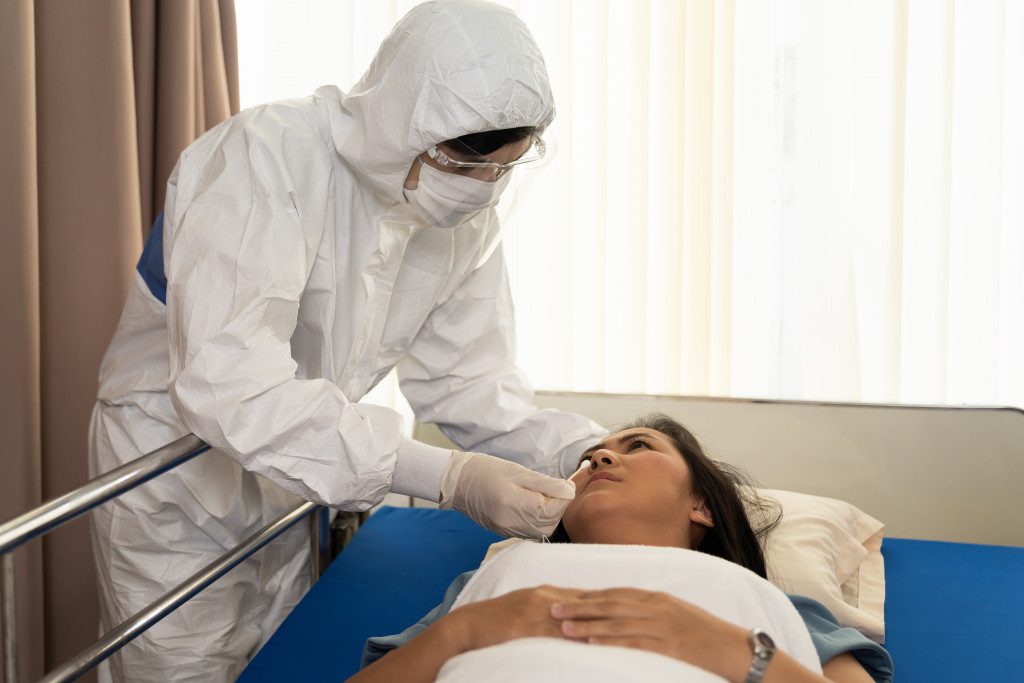As a healthcare worker, you know that infections are a serious concern in the workplace. You also know that patients are at a higher risk for infections because of their weakened immune systems. But there are some things about infections that even the most experienced healthcare workers may not know. Here are four things you didn’t know about workplace infections:
How workplace infections spread
It’s no secret that workplace infections are a serious concern. What may be less well-known, however, is the various ways in which these infections can spread. In this section, we’ll take a closer look at how workplace infections can spread and some of the measures you can take to protect yourself and your patients.
Cross-infection
Cross-infections occur when an infection is passed from one patient to another. Cross-infections happen when bacteria, fungi, parasites, or viruses are transferred from person to person. Cross-infections can occur through contact with contaminated surfaces, coughing and sneezing, human contact, or touching contaminated objects. Infections can be spread in any type of workplace, including schools, banks, stores, government buildings, and homes. You can even get cross-infection from touching a doorknob.
One of the most common ways that infections are spread is through contact with contaminated surfaces. This includes door knobs, countertops, telephones, and computer keyboards. These objects can harbor bacteria, fungi, and viruses that can cause infection.
Nosocomial Infection
Nosocomial infections occur when an infection is acquired in a hospital or other healthcare setting. They happen when bacteria, fungi, or viruses are transferred from one patient to another.Nosocomial infections can occur through contact with contaminated surfaces, medical equipment, or the hands of healthcare workers. Infections can also be spread through the air by coughing and sneezing.
Examples of nosocomial infections include urinary tract infections, gastrointestinal infections, pneumonia, and skin infections. While some are benign, some can also cause long-term problems.
Occupational Infection
Occupational infections occur when an infection is acquired in the course of one’s job. Examples of occupational infections include exposure to tuberculosis or other airborne pathogens, needle injuries, and contact with contaminated body fluids.
Occupationally-acquired infections occur when an infection is contracted through exposure to infectious material at work.
Common Workplace Infections
The most common workplace infections are respiratory tract infections, gastrointestinal infections, and skin and soft tissue infections.
Respiratory Tract Infections
Respiratory tract infections are caused by viruses, bacteria, or fungi and can be spread through coughing and sneezing. These kinds of infections happen to a person’s respiratory system, hitting parts like the throat, airways, lungs, and sinuses. Although some of them do not require medical attention and may disappear on their own, getting treatment is highly recommended to shorten their effects.
Some common respiratory tract infections include:
- the common cold
- sinus infections
- respiratory syncytial virus (RSV)
- influenza (the flu)
Gastrointestinal Infections
Gastrointestinal infections are caused by viruses, bacteria, or parasites and can be spread through contaminated food or water. Skin and soft tissue infections are caused by bacteria and can be spread through contact with contaminated surfaces or injured skin.
Gastrointestinal infections affect a person’s stomach and intestines. These kinds of infections can cause vomiting, diarrhea, and abdominal pain.
Some common gastrointestinal infections include:
- food poisoning
- gastroenteritis
- norovirus
- rotavirus
Skin and Soft Tissue Infections
Skin and soft tissue infections are caused by bacteria and can be spread through contact with contaminated surfaces or injured skin. Skin and soft tissue infections affect the skin and underlying tissues. These kinds of infections can cause redness, pain, swelling, and drainage of pus.
Some common skin and soft tissue infections include:
- cellulitis
- abscesses
- folliculitis

The Toll of Workplace Infection
Workplace infections can have a serious impact on both employees and employers. Employees may experience symptoms such as fever, chills, fatigue, and muscle aches. Employers may see an increase in absenteeism, workers’ compensation claims, and health care costs.
A workplace’s reputation can suffer greatly if a workplace infection spreads there. This is especially true if the infection is due to negligence on the part of the employer. For example, if the employer does not provide adequate sanitary facilities or does not enforce proper hygiene procedures, the infection may spread quickly. This can lead to a loss of business
Ways to Prevent Workplace Infections
There are several ways to prevent workplace infections, including vaccination, handwashing, and using personal protective equipment (PPE). Vaccination is the best way to protect against respiratory tract infections such as influenza (flu) and pneumococcal disease (pneumonia). Handwashing is the best way to prevent gastrointestinal and skin and soft tissue infections. PPE such as gloves, gowns, masks, and eye protection should be used when handling infectious material or caring for patients with known or suspected infectious diseases.
Workplace infection control programs can help reduce the spread of infection in the workplace. These programs typically involve education and training on infection prevention practices. As part of the program, the health of employees must be monitored so that any infections can be promptly identified. If there are signs, investigate quickly, and if there is indeed an outbreak, it should be reported so that action can be taken immediately. Engineering controls such as ventilators, ozone generators, and disinfectants help in preventing and mitigating the damage of infections. Lastly, personal protective equipment must always be used when indicated.
Final Thoughts
Workplace infections are a serious concern for healthcare workers and patients alike. By understanding the types of workplace infections, their potential impact on employees and employers, and ways to prevent them, you can help keep your workplace safe for everyone involved.

